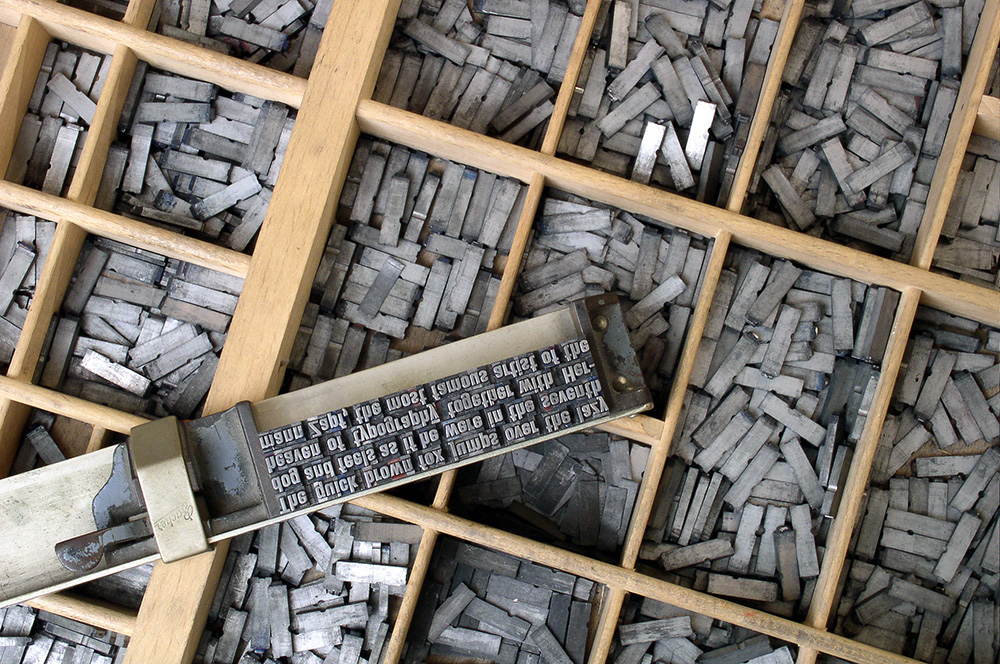What is Typography?

Willi Heidelbach [GFDL, CC-BY-SA-3.0 or CC BY 2.5], via Wikimedia Commons
Most definitions of typography reflect a medium specific context. Printed and online dictionaries define typography as: “the style and appearance of printed matter” (Oxford), “the art or procedure of arranging type or processing data and printing from it” (Collins), or “typography is concerned with the determination of the appearance of the printed page” (Britannica). One thing almost every definition has in common is that typography is for the printed page.
Typography must be redefined to reflect modern multimedia usage. Peter Bilak wrote in his essay “What is Typography?” that such definitions “are not as flexible as the activities which they define”, that typography should not be linked to any specific medium, technology, or method of production; that it is a creative discipline with room for experimentation (Bilak). Bilak concluded that typography “is no longer defined by technology, but evolves with it”.
Typography today crosses many disciplines and media forms. Current words used to describe digital type — electronic text, web typography, screen type, digital typography, etc. — further promote the divergent path and define digital type as an extension of printed type. A new definition, perhaps even a new term is needed to define modern practice, as the term typography is so deeply rooted in print. In this light, we will call it type.
Type is the rendered character.

Merriam-Webster defines typography as the “style, arrangement, or appearance of typeset matter”. This is perhaps the most accurate definition. At the surface, typography is an element of design or as Matthew Butterick said, “the visual component of the written word”. Beginning with a blank medium, designers use type along with image, space, and color to shape a message. Perhaps, typography is best defined as an act of expression; an act described by Ellen Lupton as the relationship between technology and the human eye. Typography is not constrained or confined by technology rather a mirror of it.
This history of typography relects a continual tension between the hand and the machine, the organic and the geometric, the human body and the abstract system.
Typography is concerned with legibility, readability, accessibility, line length, leading, point size, and the myriad of rules that govern good typography or the written word. However, as with anything as widely used as typography, it fits into many categories and spans countless disciplines, practices, and methodologies. Typography is a discipline with its own set of theories, principles and practices intertwined with the theories of the many disciplines it overlaps.
Typography is analog and digital, temporary and portable, static and dynamic. It is printed type, web type, digital type, screen type, art, and science. It is part graphic design, interactive design, web design, publication design, and cinematography. It relies on design and interactive methodologies along with the sciences of accessibility, human-computer-interaction, reading, and cognition. Type is the rendered character.
Type is history.
Setting type for emergent media is a mere extension of what we have been doing for over 560 years. To define, understand, or use type correctly, you must first look back on its rich history.